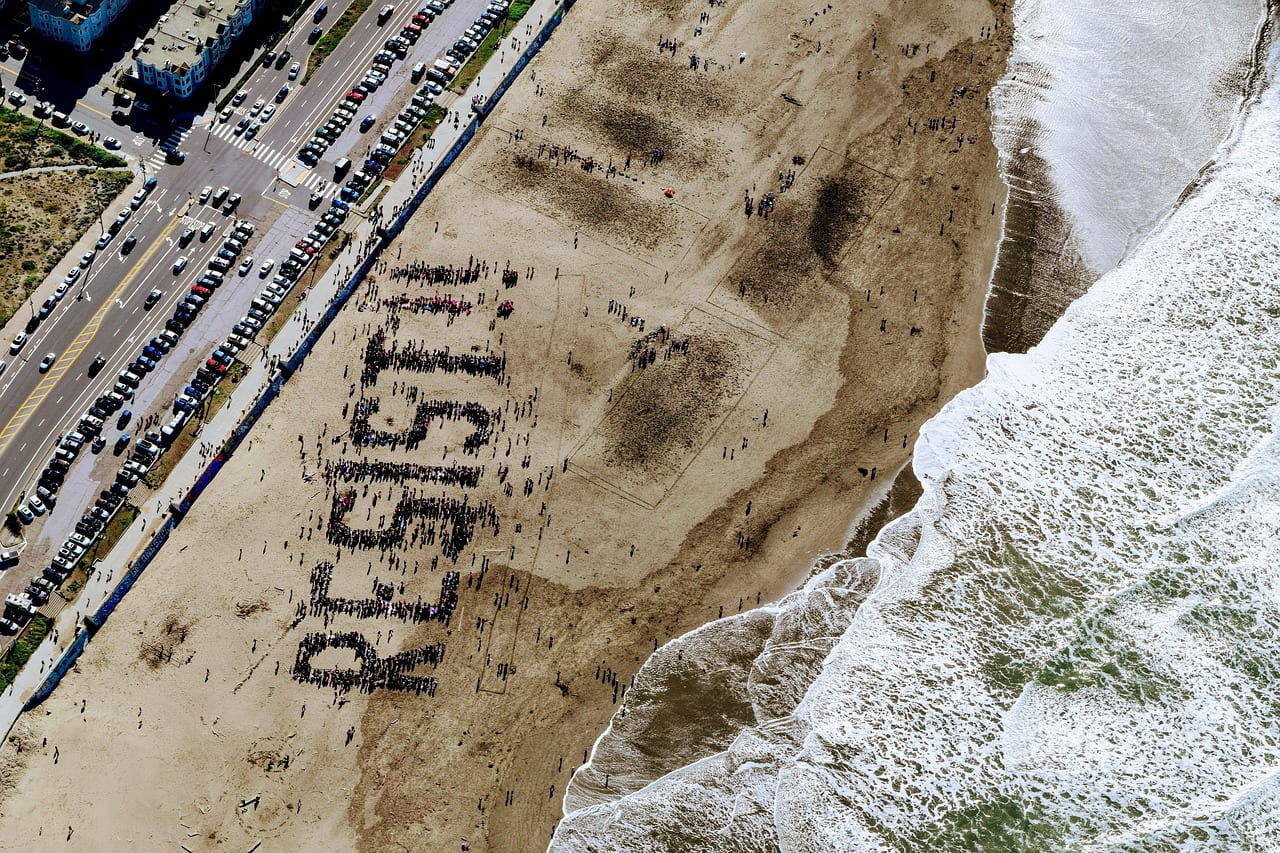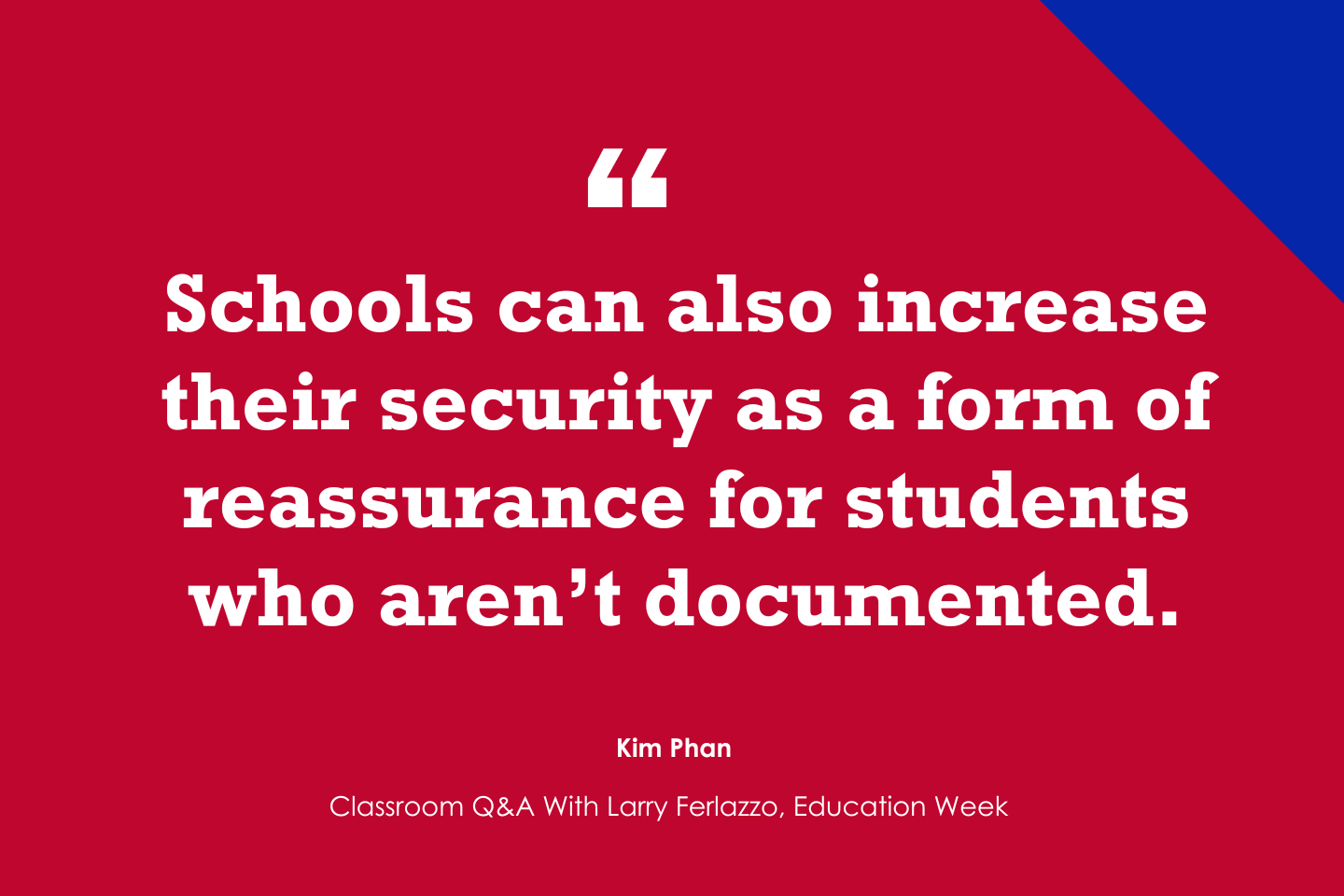This year’s college financial aid process was supposed to be easier, after the U.S. Department of Education revamped the Free Application for Federal Student Aid, or FAFSA, last year.
But problems with the FAFSA form began last fall:
The new form was released months behind schedule, setting colleges scrambling to get financial aid packages out in time.
The released form included a mistake that would have cost students $1.8 billion in federal student aid. The Education Department said in January it would fix the issue – but the fix only compounded the delays in sending student’s FAFSA data to schools.
And a technical issue with the form meant many non-citizens, or children of non-citizens, could not fill it out.
Vanessa Cordova Ramirez is a U.S. citizen, but her mom is not. When they sat down to fill out the FAFSA earlier this year, the application didn’t go through. It’s a similar story for others with parents who do not have a Social Security number.
Cordova Ramirez was in a financial aid limbo. She had gotten into all her top choice schools, but she couldn’t commit or put a deposit down anywhere without knowing how much financial aid she was getting from each school.
“If I don’t receive anything, what am I supposed to do?” she said. “How am I going to pay for everything? Am I going to go into the school that I want to? Am I going to pursue the career that I want to? Am I going to be something in life?”
Finally, after many attempts to submit the FAFSA, Cordova Ramirez got her form through in May.
Many students are still stuck
NPR spoke with families, counselors and advocates who shared similar problems as Cordova Ramirez. Among those impacted are permanent residents, green card holders and undocumented parents without a Social Security number.
Eric Hoover is a senior writer for the Chronicle of Higher Education and has been covering the FAFSA ordeal. He says there are still a lot of students experiencing issues with FAFSA, like low-income first generation students and, in many cases, students who are born in the U.S. but have one or more parents who are undocumented.
“It also includes a huge swath of broadly defined middle-income students who have encountered problems with the FAFSA and who, in some cases, had to wait and wait and wait to get one aid offer or to get aid offers from all the colleges they were waiting to hear from so that they could sit down at the kitchen table with mom and dad and try to make an apples-to-apples comparison of their aid offers,” he says.
And for some students, Hoover says it’s not just a question of how much money they will get: “The FAFSA is a key that unlocks college for so many American families.”
“In many cases, without every last dollar that they will hope to receive, they’re not going to be able to attend perhaps the college they most wanted to attend but, in some cases, any college at all.”
Universities are concerned
Hoover says some colleges are nervous about their enrollment numbers dropping: “Particularly at the many relatively small colleges that do not have gigantic endowments, as well as regional public institutions throughout the country.”
He says he has been in touch with some college presidents and enrollment leaders who are keeping an eye on the bottom line.
“In some cases, the downstream effect of that enrollment shortfall could be budget cuts that really hurt, could be pay or hiring freezes and perhaps, you know, the worst kind of cuts that any college could make, which is to cut jobs,” he says. “An empty seat is a lost revenue.”
FAFSA is the key to college for many students. Hoover says most colleges don’t have the resources to fill that missing federal aid.
Hoover says the college officials he’s spoken with want the lingering technical errors in the FAFSA to be fixed: “They want to hear that students who still can’t get through and complete the federal aid form are not being ignored and that if there need to be more workarounds that enable the FAFSA saga of 2024 to subside, it needs to happen now.”
For sponsor-free episodes of Consider This, sign up for Consider This+ via Apple Podcasts or at plus.npr.org.
Email us at considerthis@npr.org.
Transcript:
SACHA PFEIFFER, HOST:
The college application process was supposed to get easier. That’s because last year, the U.S. Department of Education announced changes to the Free Application for Federal Student Aid, or FAFSA.
VANESSA CORDOVA RAMIREZ: Hi, Hello. My name is Vanessa Cordova Ramirez, and I’m a Mexican first-generation student, hopefully attending college in the fall.
PFEIFFER: The new formulas used to calculate how much money students would get meant more federal money for low-income families and children of immigrants like Cordova Ramirez.
CORDOVA RAMIREZ: Well, I am interested in St. Joseph’s University and Manhattan College. Those are my top two. Maybe St. John’s – I’m thinking about it.
PFEIFFER: Cordova Ramirez lives in Queens, N.Y., and wants to become a radiology technician. She works two jobs and helps out a lot around the house. She wants to stay in New York for school, to continue to help out her family and be close to her younger brother. So location is her top priority when choosing a college.
The second is, of course, cost. But when Cordova Ramirez and her mom sat down to fill out the FAFSA earlier this year, their application didn’t go through – just like many others with parents who do not have a Social Security number.
JANET WOOJEONG LEE, BYLINE: Hi, Vanessa. Hi.
PFEIFFER: NPR producer Janet Woojeong Lee went to visit Cordova Ramirez and her school counselor, Kristin Azer, at Williamsburg Preparatory High School, as they tried again to fill out the form earlier this year.
KRISTIN AZER: There’s a box to check below that says I do not have a Social Security, so for somebody undocumented, when you click it, it’ll gray out the box, and you hit through continue.
PFEIFFER: Cordova Ramirez comes from a mixed-status family. Even though she is a U.S. citizen, her mom is not.
AZER: Gotten to the second step – creating a user name. We’ve made it to the third step. And now this is address – does make you feel like it’s possible. And then the error pops up – for more help creating your account call…
AUTOMATED VOICE: Start the application without an SSA ID. You can complete the entire application and submit it without signatures, or you can print a signature page and mail it in.
LEE: So did we just get inaccurate information?
AZER: Correct. That is true for the old form. That is not correct for the brand-new application. What is the fix? Who do we demand them from when the people that we can call have no answers themselves?
(SOUNDBITE OF MUSIC)
ANGEL PEREZ: Many students are holding off on enrolling at institutions because they need to know exactly how much they will owe in order to enroll.
PFEIFFER: Angel Perez is the CEO of the National Association for College Admission Counseling. Cordova Ramirez was in that financial aid limbo. She had gotten into all her top choice schools, including St. Joseph’s, where the annual tuition is about $35,000. But she couldn’t commit or put a deposit down anywhere without knowing how much financial aid she’s getting from each school.
CORDOVA RAMIREZ: If I don’t receive anything, what am I supposed to do? Like, how am I going to pay for everything? Like, am I going to go into the school that I want to? Am I going to pursue the career that I want to? Am I going to be something in life?
PFEIFFER: After many attempts to submit the FAFSA, Cordova Ramirez did finally get her form through in May.
CORDOVA RAMIREZ: I finally received my financial aid package from St. Joseph’s, and with the FAFSA amount that they’re giving me and the scholarships from St. Joseph’s, it looks like I’m going to basically be going almost full ride, which is amazing ’cause obviously it’s more affordable for my family.
PFEIFFER: But there are still students stuck in financial aid limbo.
(SOUNDBITE OF MUSIC)
PFEIFFER: CONSIDER THIS – we’re just a couple of months away from colleges and universities kicking off a new academic year. Before 2024, students would already have known how much aid they’re getting. For many, not knowing could mean they can’t go to college.
(SOUNDBITE OF MUSIC)
PFEIFFER: From NPR, I’m Sacha Pfeiffer.
(SOUNDBITE OF MUSIC)
PFEIFFER: It’s CONSIDER THIS FROM NPR. The problems with the FAFSA form, the Free Application for Federal Student Aid, began last fall. And with August and September just around the corner, some applicants continue to experience technical issues.
ERIC HOOVER: It’s a whole lot of students. It includes low-income first-generation students in many cases. It includes students who are U.S.-born but have one or more parents who are undocumented.
PFEIFFER: I spoke with Eric Hoover, a senior writer for the Chronicle of Higher Education who’s been covering the FAFSA ordeal.
HOOVER: It also includes a huge swath of broadly defined middle-income students who have encountered problems with the FAFSA and who, in some cases, had to wait and wait and wait to get one aid offer or to get eight offers from all the colleges they were waiting to hear from so that they could sit down at the kitchen table with mom and dad and try to make an apples to apples comparison of their eight offers.
PFEIFFER: For some students, is it not just a question of how much money they will get, but whether they’ll be able to go to college at all?
HOOVER: Yes, absolutely. The FAFSA is a key that unlocks college for so many American families, and without the federal aid, in many cases without every last dollar that they will hope to receive, they’re not going to be able to attend perhaps the college they most wanted to attend, but in some cases, any college at all.
PFEIFFER: So this is obviously affecting students. I understand that some colleges are nervous about having possibly lower numbers of students for the next year, and maybe the dollars and the finances won’t work out the way they want. What’s the concern on the enrollment front?
HOOVER: Yeah, great concern on the enrollment front, particularly at the many, many relatively small colleges that do not have gigantic endowments, as well as regional public institutions throughout the country. I’ve been in touch with some college presidents and enrollment leaders who tell me that they’re worried that when everything shakes out and the fall semester begins, that they are going to have 5- or 7- or 15% fewer first year students than they did last year. They’re concerned about that on a human level, but they’re also concerned about the impact of that shortfall on the bottom line. And in some cases, you know, the downstream effect of that enrollment shortfall could be budget cuts that really hurt, could be pay or hiring freezes and perhaps, you know, the worst kind of cuts that any college could make, which is to cut jobs.
PFEIFFER: Explain a little more why this affects college finances. How does the FAFSA aid fit into how colleges do their own financial planning?
HOOVER: Right. So if the FAFSA is the key that is going to unlock college for a given student, and without that federal aid, they really don’t have the means to afford going to college X, well then, they can’t enroll, and that’s an empty seat on a college campus. Most colleges do not have the resources to fill the missing federal aid that so many students have right now with an incomplete FAFSA. So…
PFEIFFER: So those empty seats are lost revenue.
HOOVER: And an empty seat is a lost revenue, an empty bed or an empty – you know, if – a quad that has fewer students in it is also a bottom line that looks less healthy than it might otherwise.
PFEIFFER: What are you hearing from the colleges and university officials you talk to about what they need to solve this problem?
HOOVER: They want the glitches and technical errors that are continuing to foul them up – they want them fixed. They want to hear that students who still can’t get through and complete the federal aid form are not being ignored and that if there need to be more workarounds that enable the FAFSA saga of 2024 to subside, it needs to happen now. We’re a few weeks away from the Fourth of July. They just want these problems fixed.
PFEIFFER: That was Eric Hoover, a writer for the Chronicle of Higher Education.
(SOUNDBITE OF MUSIC)
PFEIFFER: This episode was produced by Alejandra Marquez Janse, Linnea Anderson and Brianna Scott. It was edited by Tinbete Ermyas and Courtney Dorning. Sequoia Carrillo and Janet Woojeong Lee contributed reporting. Our executive producer is Sami Yenigun.
(SOUNDBITE OF MUSIC)
PFEIFFER: It’s CONSIDER THIS FROM NPR. I’m Sacha Pfeiffer.
Copyright 2024 NPR. To see more, visit https://www.npr.org.
This year’s college financial aid process was supposed to get easier. But delays and mistakes by the U.S. Department of Education may prevent some students from enrolling in college. MindShift








